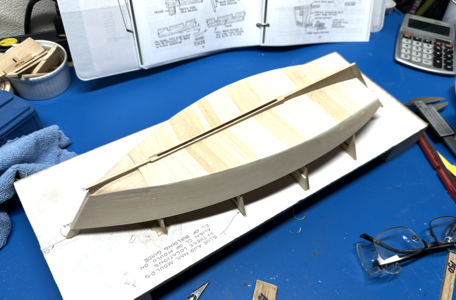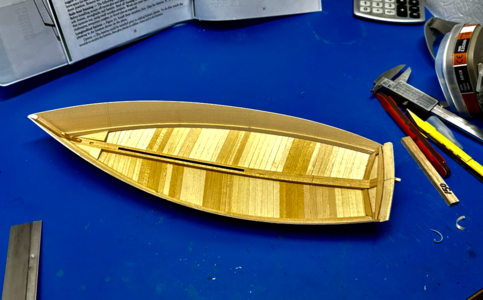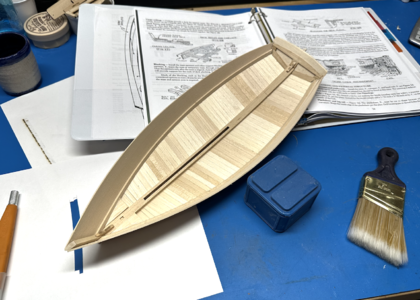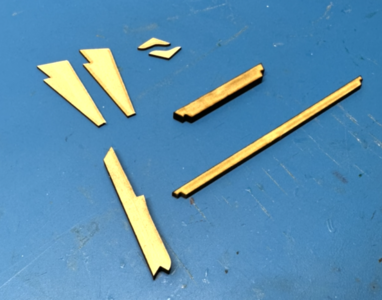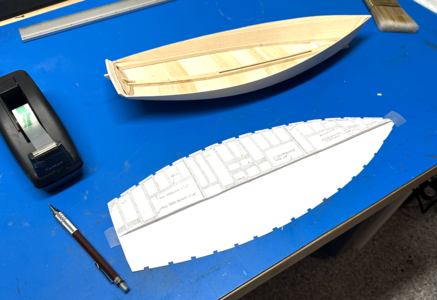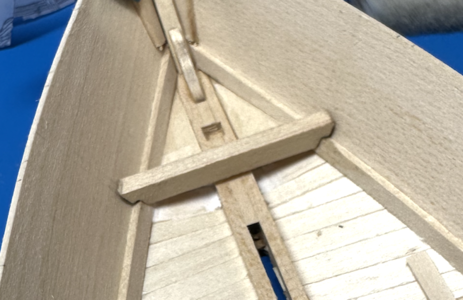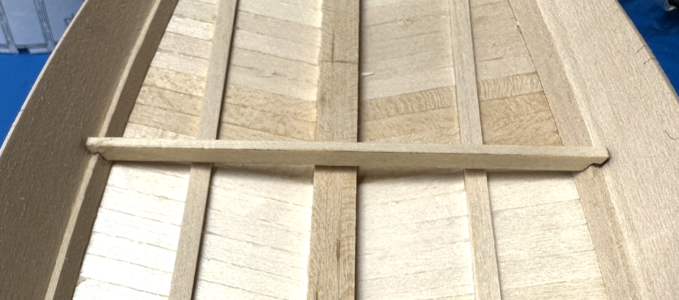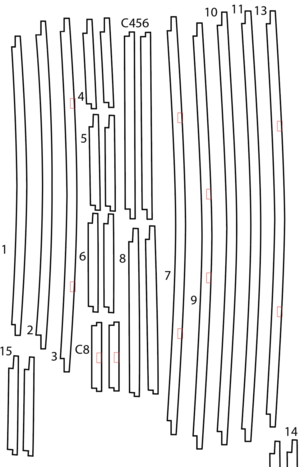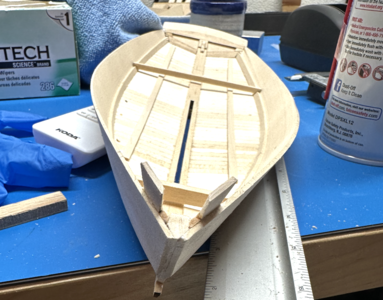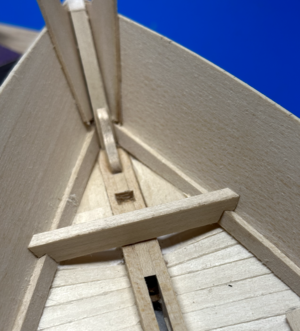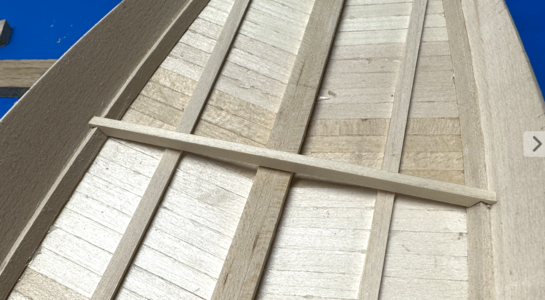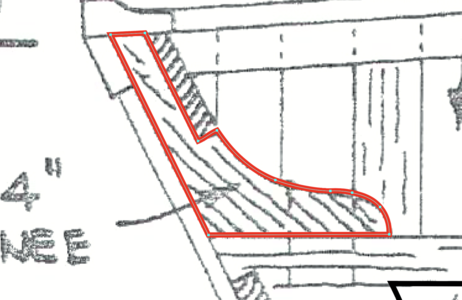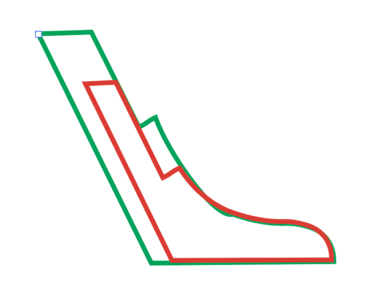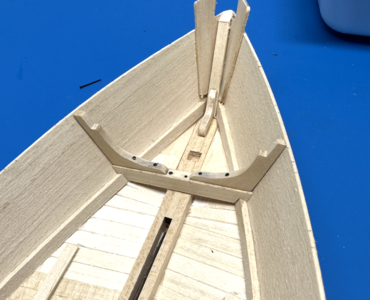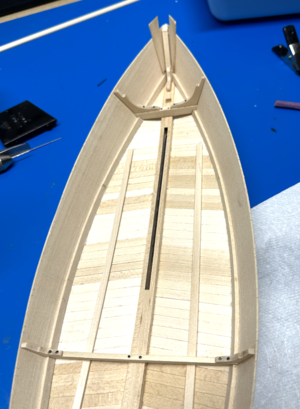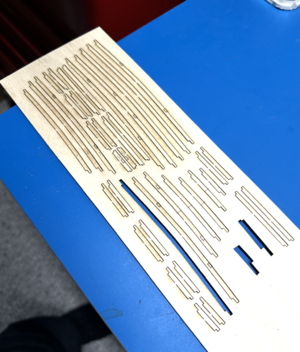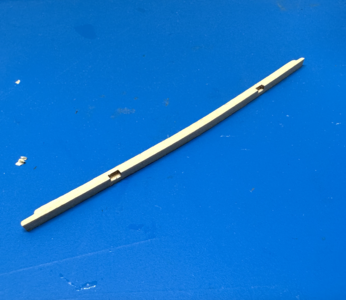Got started on the bottom yesterday. it's pretty straightforward and fun, just set up a mitre on your cut or sanding and it goes quickly, making sure one side doesn't grow faster than the other.
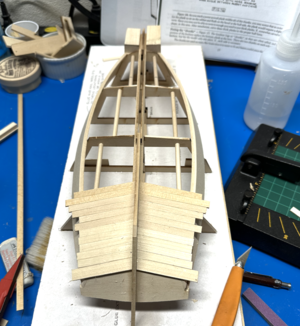
I got within range of the chunks and started changing the angle of installation...
Yeah, it's nice but looks a little too gradual.
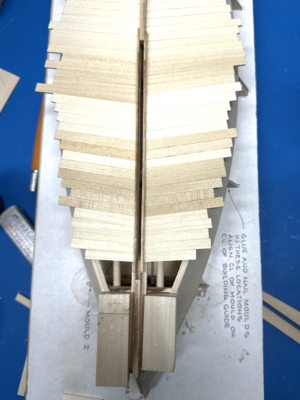
That smooth but noticeable change in the patter is typical of all the drawings I've seen of flatties and sharpies, so I did it again.
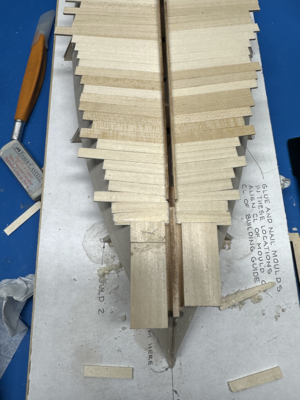
We'll see how it comes out.
I think the extra time of backing up on the bottom planking to get the angles right was worth it. To me. Here I am literally chipping away at the chunks.
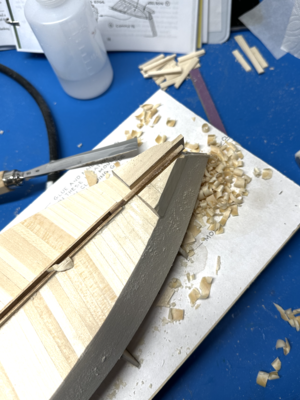

I got within range of the chunks and started changing the angle of installation...
Yeah, it's nice but looks a little too gradual.

That smooth but noticeable change in the patter is typical of all the drawings I've seen of flatties and sharpies, so I did it again.

We'll see how it comes out.
I think the extra time of backing up on the bottom planking to get the angles right was worth it. To me. Here I am literally chipping away at the chunks.





